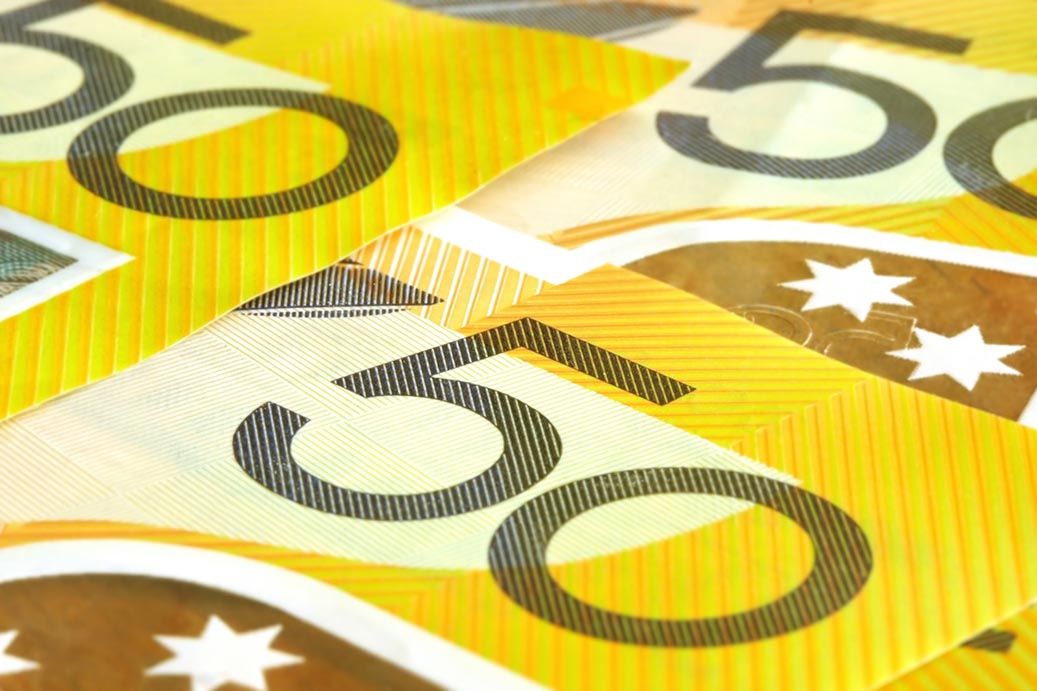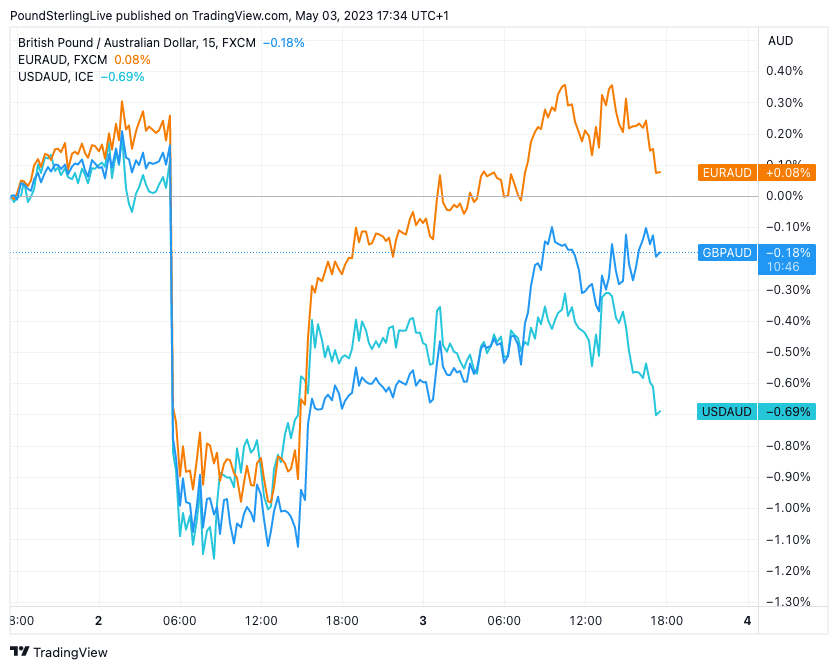Australian Dollar to Remain an Underperformer Forecasts HSBC
- Written by: Gary Howes

Image © Adobe Stock
The Australian Dollar will remain an underperformer in global FX, despite the gains it made following this week's surprise Reserve Bank of Australia (RBA) interest rates rise.
This is according to HSBC which finds that the currency will only likely start seeing a sustained shift in fortunes towards the second half of the year.
"Challenges for the AUD remain," says Clyde Wardle, Senior EM FX Strategist at HSBC.
The call comes in the wake of the RBA's decision to hike its cash rate by 25bp to 3.85% at its May 02 meeting, which resulted in a 1% rise in the Australian Dollar.
Markets had expected a 'no change' decision after Australian inflation rose by a smaller-than-expected rate in the first quarter at (1.4% QoQ from a prior increase of 1.9%). The trimmed mean measure came in at 1.2% QoQ from 1.7% previously.
The key change in the RBA's forward guidance was the addition of the phrase "in a reasonable timeframe" following the unchanged guidance of "some further tightening of monetary policy may be required to ensure that inflation returns to target”.
Above: AUD gains have largely been retraced by EUR and GBP, with USD recovering by a lesser degree. Consider setting a free FX rate alert to better time your payment requirements, please see here.
This appears to put the RBA in data-dependency mode and opens the door to another hike.
According to the RBA, the notable risk that may cause a delay to the normalisation of inflation "in a reasonable timeframe" is stickier-than-expected services inflation.
To HSBC's currency strategists, the AUD's move higher is likely merely a knee-jerk reaction that is likely to be faded, for two reasons:
"First, past hiking cycles have shown that, as the cycle approaches the end, rate hikes delivered after a pause could only push up front-end rates temporarily, particularly without a hawkish shift in reaction function," says Wardle.
"Second, markets reward currencies with hawkish central banks and growth outperformance, e.g, the EUR but not the NZD," he adds.
Compare GBP to AUD Exchange Rates
Find out how much you could save on your pound to Australian dollar transfer
Potential saving vs high street banks:
A$48.75
Free • No obligation • Takes 2 minutes
The Pound to Australian Dollar exchange rate fell by 0.70% in the wake of the RBA's decision but a 0.50% bounce on May 03 suggests much of the Aussie's strength is being faded. The same is true for EUR/AUD.
The AUD/USD is meanwhile holding post-RBA gains, but the rally remains uninspired when compared to April-May losses.
Looking ahead, a more sustained bounce against the Pound, Euro, U.S. dollar and other major currencies is only likely in the second half of the year, according to HSBC.
"China’s recovery has not provided a strong boost to Australia’s growth through goods and services exports," says Wardle.
But HSBC expects China's demand for Australia’s exports to pick up in 2H23.
The second half of the year is also tipped to see investor focus fall squarely on expectations for central bank interest rate cuts, with the currencies belonging to the biggest cutters falling furthest.
"After major central banks are done hiking, markets may start to look for currencies whose central banks are expected to hold rates for longer – the AUD is a good candidate," says Wardle.
But, for now, the trend is likely to favour further GBP/AUD and EUR/AUD upside. "However, until one of these themes materialises, the AUD may remain an underperformer," says Wardle.





